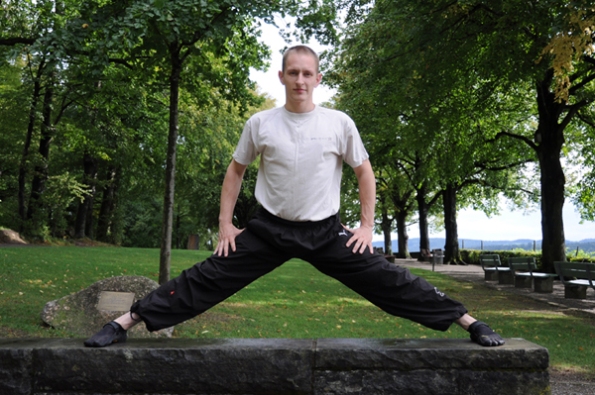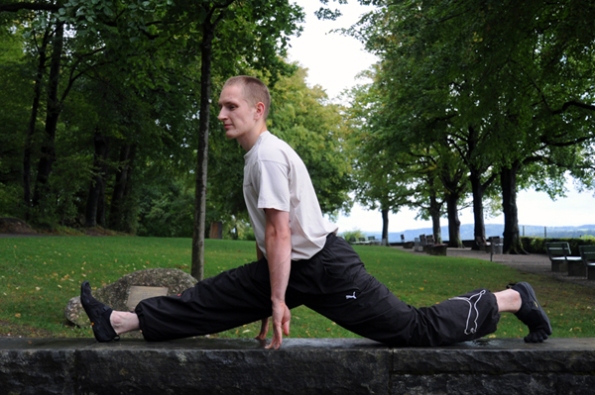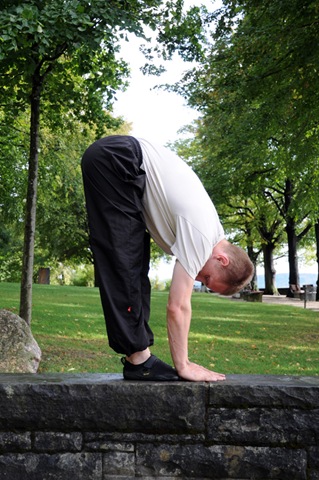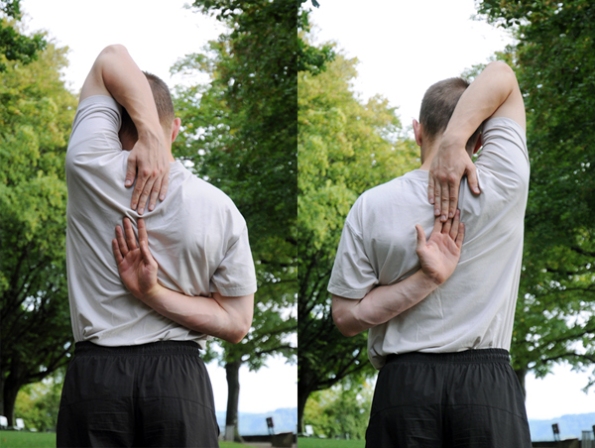Flexibility Experiment, Part 3: Method and Benchmarks
(Total reading time: <3 minutes)
After illustrating my issues with common stretching exercises (they don’t work) in the first part of this series and introducing the new method I will experiment with (Resistance Stretching) in the second part, it is now time to lay out how I will test the new stretching method and how I will measure it’s effects (or lack thereof).
Method
I will be doing the Resistance Stretching exercises as described in the book The Genius of Flexibility by Bob Cooley. I will do the exercises once a day, at least six days a week for the next 30 days. I’m allowing for one day off per week in case I feel like it might be too much to do the exercises daily, but I assume that won’t be the case. During these 30 days, I will continue with my usual training routines (weight-lifting and martial arts training) and I will not make any major changes to my diet, sleeping schedule or anything else that might affect the results. I also want to emphasize that I will be doing all of the exercises described in the book and only the ones described in the book. In other words, I will not do just the exercises that could improve the benchmark-results (see below).
Benchmark: Objective Measures
I want to be able to objectively measure changes that Resistance Stretching might cause. For this, I picked out a few easily measurable stretches as benchmarks. The stretches were performed after a very light warm up and were measured as seen on the pictures. I didn’t pre-stretch or do any heavy exercise before measuring.
Split
The split, classical representation of Kung Fu-flexibility, has to be a part of this, of course. It also happens to be a special weakness of mine. Even with the most intensive stretching I’ve ever done, I’ve never come close to a full split. To avoid underpants-related variations that might occur with a crotch-to-ground measurement, I measured from the inside of my hip joint to the ground. Result: 46 cm / 18.1”
Sideways Split
The sideways split is a good measurement of leg and hip flexibility, as it involves many different muscle-groups. Here, my current flexibility isn’t quite as abysmal as with the central split. Measured from the inside of the hip joint to ground, I got the same result for the sideways split facing either way: 21 cm / 8.3”
Toe-Touch
This is done with completely straight legs and as a benchmark, I measured the distance from the lowest point of my head, when it was hanging down in a relaxed way, to the ground. On the picture, I have my head lifted slightly, so it doesn’t exactly represent the position that was measured. Distance: 36 cm / 14.2”
Joining Hands Behind Back
Here, I didn’t take any measurements. I simply tried to get my hands as close to each other as possible, without pulling on them. I particularly wonder if I can correct the apparent asymmetry visible here (my right hand can’t reach upward as far as my left hand).
Measurements (overview)
| Centimetres | Inches | |
| Split | 46 | 18.1 |
| Sideways Split, left | 21 | 8.3 |
| Sideways Split, right | 21 | 8.3 |
| Toe-Touch | 36 | 14.2 |
Subjective Impressions
Of course, not every effect of a stretching routine can be measured objectively. Not that I expect it to positively influence every aspect of my life, as Bob Cooley claims it should. But I will take note of and report on what the stretching routine feels like, whether it is easy to keep doing daily and any side-effects that I experience that might be caused by the stretching. Depending on how much happens during the experiment, I will publish one or more posts before the end of the 30 day period.
This post is part of the Flexibility Experiment series.
Part 1: The Problem with Stretching
Part 2: Introducing Resistance Stretching
Part 3: Method and Benchmarks (currently viewing)
Part 4: Q&A with Anne Tierney, Resistance Stretching Expert
-
08/09/2009 at 18:29Flexibility Experiment, Part 2: Introducing Resistance Stretching « The Explorative Approach



